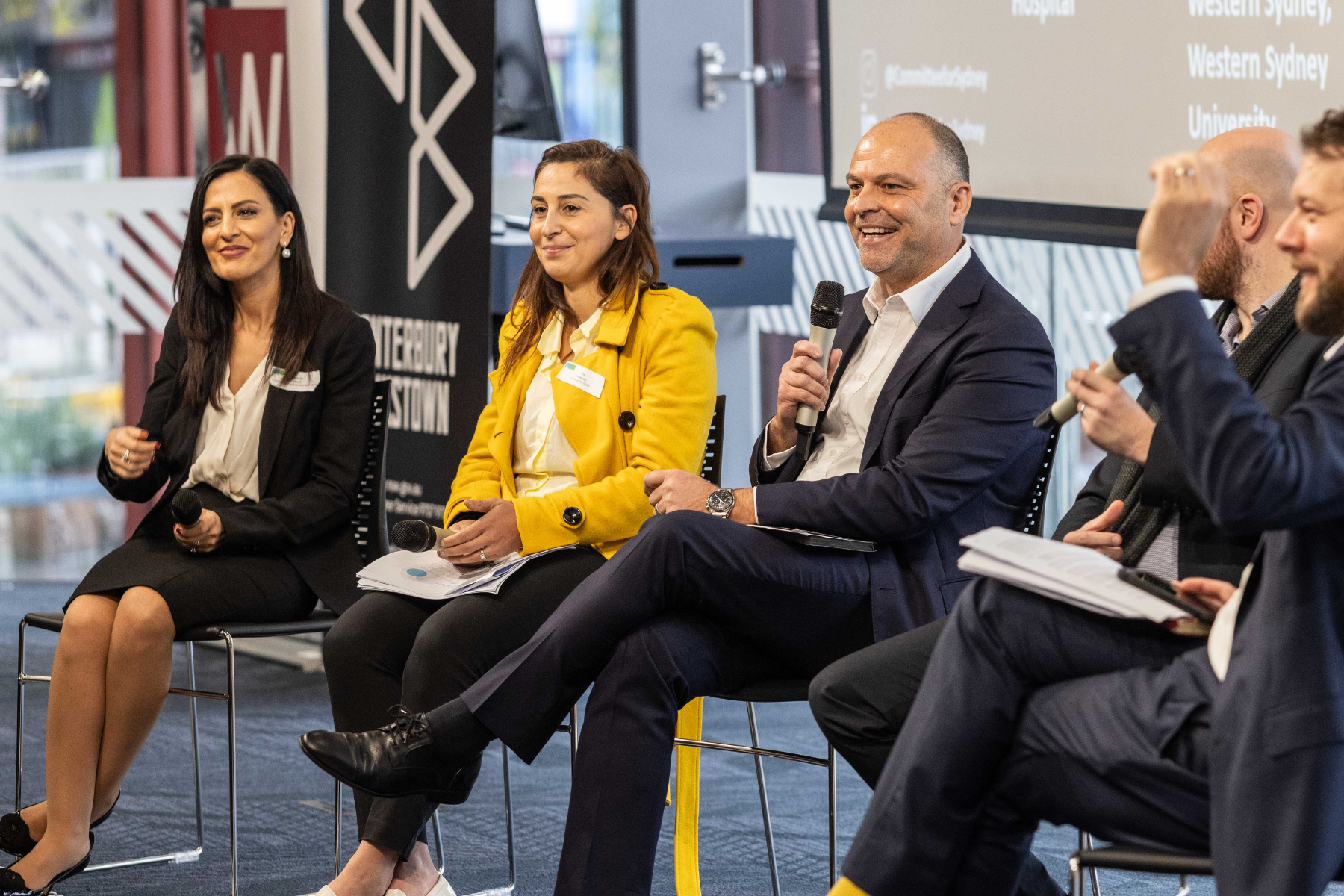Subject
A deep dive into one of Sydney's fastest growing powerhouse cities
Bankstown+10
Date
Friday 07 June 2024
Time

Subject
A deep dive into one of Sydney's fastest growing powerhouse cities
Bankstown+10
Date
Friday 07 June 2024
Time
It’s the question that challenges the people, policymakers and leaders of any city going through rapid change: how can we grow, develop, and attract new opportunities without losing our unique character and soul?
This was a key focus at Bankstown+10, our deep dive into the next 10 years for one of Sydney’s fastest growing powerhouse cities, where we heard from over 20 brilliant speakers on Canterbury-Bankstown’s culture, housing, transport, resilience and future economies.
Here are some key insights from the day:
1. In order to grow and do density well, planning must consider Canterbury-Bankstown’s unique demographics of key workers, migrants and large families. This includes prioritising the high proportion of key workers living in local TOD precincts (areas set to get more mixed-use development around transport hubs) – over 35% of people living in Wiley Park and Lakemba alone are key workers. It also means diversifying Bankstown’s apartment mix: many new migrants moving to Bankstown are used to living in high density and in intergenerational family homes, but struggle to find family-friendly apartments in Sydney. We should offer more apartment choices and integrate gathering and play spaces in new developments to foster community and belonging amongst Bankstown’s key groups.
2. When asked to present their vision for the next ten years, local residents made the case for three things: more cultural infrastructure and funding to help creative workers practise locally and host more events in Canterbury-Bankstown, more alternative pathways to – and beyond – tertiary education for youth, and more opportunities for people who work, live and play in the area to make decisions about the future of planning and infrastructure in Bankstown.
3. Many of Bankstown’s economic opportunities are found in the industrial areas around the airport and hospital. This is quite different from other parts of Sydney, where commercial centres are the economic engines of the local economy. This presents exciting opportunities for Canterbury-Bankstown in its future economic development and the role its centres will play in supporting this.
4. Small, local businesses play a critical role in Bankstown’s economy and social fabric, providing local services to residents and contributing to vibrant community centers. Supporting these businesses through strong networks, connecting them with others across the Canterbury-Bankstown area, and ensuring that local centres are equipped with the right infrastructure and amenities are essential for fostering the local business community.
5. The opening of Sydney Metro, the new Western Sydney University campus and planned Bankstown Hospital redevelopment will make Bankstown a new centre of gravity. However, there were some challenges raised by panellists and presenters on whether the aspirations for high levels of commercial floorspace in the CBD struck the right balance with other important uses such as cultural and community infrastructure, retail and residential.
Together, these insights paint a picture of Canterbury-Bankstown’s soul: a multicultural community of families and young people, small local businesses, a flourishing creative and cultural scene, and developing industrial hubs. As The Hon. Jihad Dib emphasised in his keynote address, the people who make up this thriving community must be involved and prioritised in all policy and planning decisions. There is no one-size-fits-all solution; rich, deep, and authentic community consultation is paramount to ensuring Bankstown retains its character and soul amidst rapid development and growth.
Special thanks to our sponsors, Western Sydney University and Vicinity Centres, and event supporter City of Canterbury-Bankstown – for helping us bring these important conversations to life!